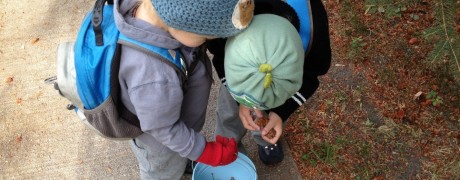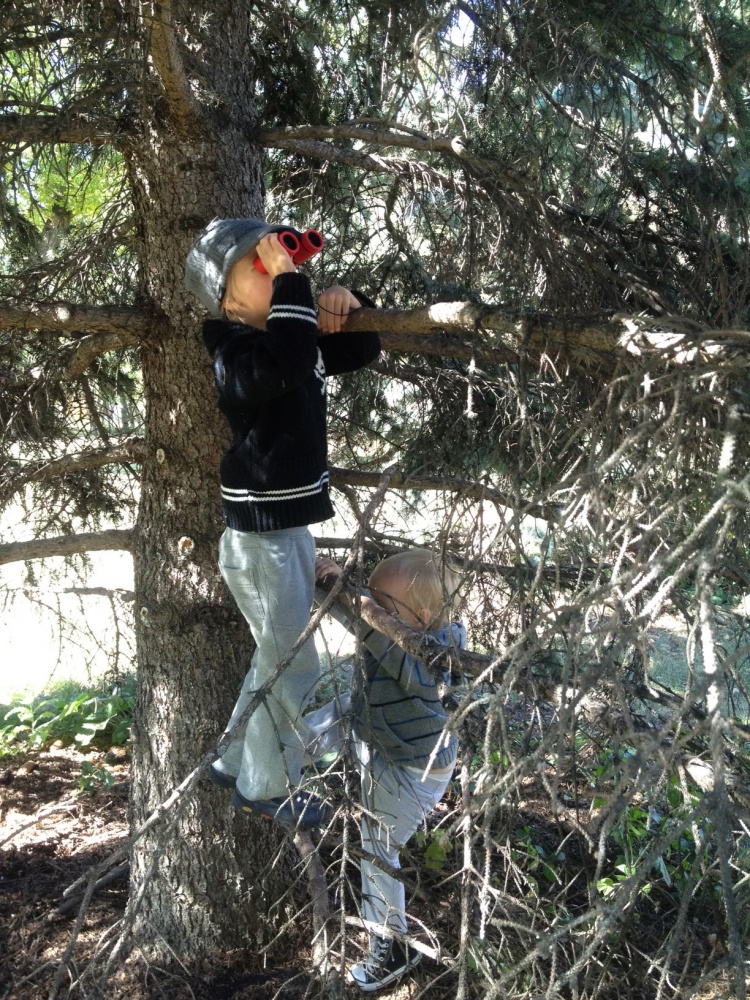In recent years, the importance of children spending time in nature has emerged in books, articles, and documentaries. What seems obvious to children, who yearn to squish their feet in the mud, splash in puddles, climb trees and run freely, is now one of those things that has been lost in the generation gap, along with various facets of a self-suffient lifestyle.
Aside from the most challenging time of year (-40 celsius), we try to get outside each day for even a brief foray into the natural world. In our cold winter months, our backyard counts as the natural world, as we play in the snow, watch the birds, gather pine cones, cozy up in snow forts, and watch our breath drift away from our bodies. I can’t stress enough the importance of high quality snow and rain gear! In the warmer months, however, nature walks are a part of our daily rhythm.
So, how do our nature walks look?
PREPARED
We get out our handy nature walk checklist (see below to download) and get to work preparing. We pack up some tea, cocoa or water, some stainless steel or camping cups (to avoid breaks), and some snacks. A light blanket is a must to make a special spot to sit and snack, to lie down for a rest, or to sketch in our nature journals, another key item we pack. We don’t need a lot of gadgets for a successful nature walk, but it’s no fun to be a fair hike from home or the car in need of toilet paper, water or first aid supplies! After a few nature walks you’ll pinpoint the fine balance between too much gear, and just enough.
FAMILIAR + EXCITING
Some days we trek on foot to our local park to climb trees, watch birds, collect specimens and explore. Other days we pack up for a drive to somewhere new. Visiting various natural areas around your town or city is a great way to expose your children to different ecosystems, varieties of trees and animals, and also keeps things exciting. However, I highly recommend having one or two special spots that your family can visit several times a year. Developing an intimate knowledge of one natural area allows children to witness even the smaller changes that occur with the change of the seasons.
SIMPLE
Nature journals, binoculars, microscopes and other tools can be a lot of fun for young learners. At the same time, know that the important part for the youngest learners is to just BE in nature. I couldn’t put it better than Rachel Carson, author of A Sense of Wonder:
“I sincerely believe that for the child, and for the parent seeking to guide him, it is not half so important to know as to feel when introducing a young child to the natural world. If facts are the seeds that later produce knowledge and wisdom, then the emotions and the impressions of the senses are the fertile soil in which the seeds must grow. The years of early childhood are the time to prepare the soil.”
Download your copy of our Tiny Peasant Wild Walks handouts up at the top of this page. Work together to draw a picture beside each item so pre-readers can easily take part in packing as they check items off the list. Laminate and use with a dry-erase pen for easy re-use! We love verses and rhymes and include one with most of our resources as a fun add-on. Children love rhyming and repetition, so feel good about reciting your nature walk verse each time you go on a trek!
Share with us about your nature walks in the comments below! Feel free to link to a post about one of your adventures.
This post was shared at Nourishing Joy’s Thank Goodness It’s Monday link up.

